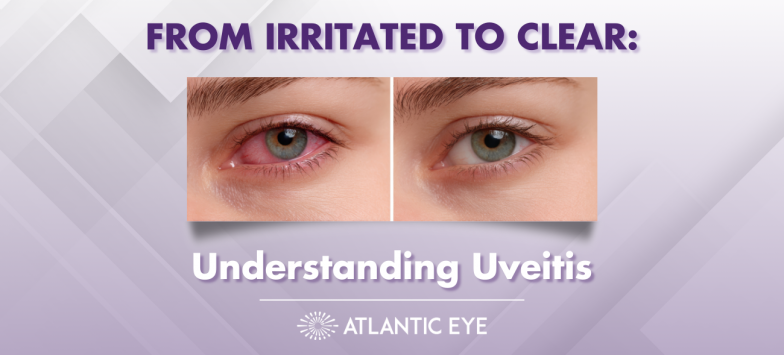
UVEITIS
There are few conditions that can create more discomfort for a patient’s eyes compared to uveitis. Uveitis is characterized by persistent and increasing inflammation within the eye known as the uveal track. This condition can manifest in various locations along this track and may be triggered due to a myriad of different reasons. Most commonly, uveitis will develop along the more anterior structures of the eye known as the iris and ciliary body.
This does not mean the posterior segment of the eye is immune to the affliction, but it is thankfully affected far less often. Patients who develop uveitis will often endorse symptoms of pain, significant light sensitivity, blurred vision, and a persistent red eye that fails to respond to over-the-counter treatments. Why this condition develops, including recommended therapies, are explained below.
A significant portion of uveitis cases will end up being considered idiopathic in nature. This simply means that there is an unknown or undiagnosed cause driving this condition. Most initial cases of uveitis will often be considered idiopathic in the absence of compelling evidence to the contrary. Certain bouts of uveitis are more straightforward and can be attributed to recent ocular traumas or intraocular surgical procedures such as cataract surgery. However, repeat cases should be scrutinized thoroughly to assess for unknown contributory factors.
Many auto-immune conditions and potential pathogens can intrinsically trigger inflammation within the eye, inducing symptoms of discomfort. An eye care provider may elect to order blood work in an effort to screen a patient for a suspected systemic condition. Uveitis cases that involve a systemic etiology will often need to be comanaged with various non-ophthalmic specialists. This allows for the most affective chance of treating the underlying cause rather than treating the symptoms alone.
Fortunately, many cases of uveitis can often be effectively treated with a carefully considered steroid course. Steroids are considered one of the most affective classes of anti-inflammatory medications available and the standard of care for uveitis treatment. Coinciding antibiotic or antiviral therapy may also be prescribed if the suspected cause is infectious in origin. Treatment will often be provided in the form of eye drops — typically topical steroids along with cycloplegic agents — to further minimize discomfort.
However, oral medications, injectables, or even IV infusions have all been implemented in more severe cases where the timing of treatment is critical to patient prognosis. Treatment is typically maintained at a specified dosage and frequency until evidence of improvement can be observed. Once this occurs, a taper schedule will usually be enacted, slowly reducing the potency of treatment as the uveitis resolves. Atlantic Eye encourages all patients to contact our office if you think your symptoms align with a uveitis flare episode.
 Austin Molbegott, OD
Austin Molbegott, OD
Optometry
Atlantic Eye
If you are interested in scheduling an eye exam with one of our award-winning physicians, please call us at 732-222-7373 or use our convenient online appointment form.
